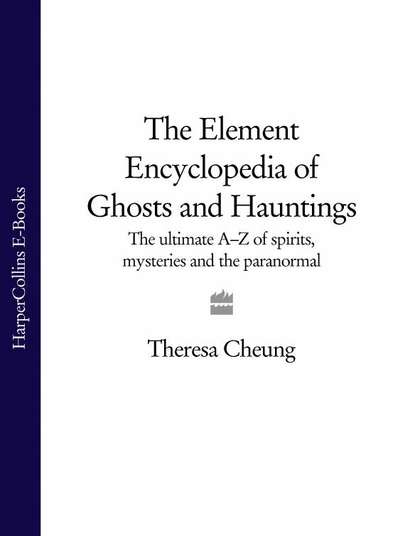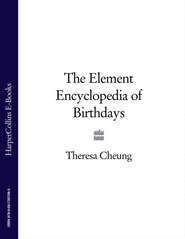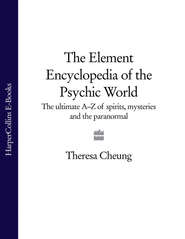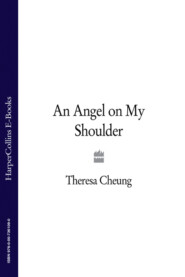По всем вопросам обращайтесь на: info@litportal.ru
(©) 2003-2024.
✖
The Element Encyclopedia of Ghosts and Hauntings: The Complete A–Z for the Entire Magical World
Автор
Год написания книги
2018
Настройки чтения
Размер шрифта
Высота строк
Поля
An amalgam of personality patterns, which in the case of hauntings are trapped on a psychic or psi field.
Projections of the human unconscious, a manifestation of an unacknowledged need or guilt.
Vehicles through which the ‘I’, the thinking consciousness, takes on a personality as well as a visible form.
Projections of will and concentration; see Thought form.
True spirits of the dead.
Localized physical phenomena directed by an intelligence or personality.
Recordings or imprints of vibrations impressed upon some sort of psychic ether. In Eastern mystical philosophy, the cosmos is permeated by a substance called the Akasha. Oxford philosopher H H Price called this substance ‘psychic ether’, a term adopted by some psychical researchers to suggest that if all events are recorded on some invisible substance, then perhaps psychically tuned people can get glimpses of these records and get a playback. See Akashic Records.
It is unlikely that any one theory can explain all apparitions, and it is conceivable that some apparitions are created by the living, that some have their own reality, that some are hallucinations and that some are psychic recordings.
Twentieth-century psychical researcher Andrew Mackenzie suggested that the ability to have hallucinations could be a function of personality. In his studies he found that one-third of cases occurred just before or after sleep, or when the percipient was woken in the night. Other experiences took place when the witness was in a state of relaxation or doing routine work such as housework, or concentrating on some activity such as reading a book. Only when the external world was shut out was the unconscious able to release impressions, which sometimes took the form of an apparition.
English psychical researcher G Tyrrell also made this link between dreamlike states and sightings of apparitions. Tyrrell theorized that there were two stages in an hallucinatory experience. In stage one the witness unconsciously experiences the apparition, and in stage two the information from stage one is processed from the unconscious in dreams or hallucinations with the required details added, such as clothing and objects.
APPLIED PSI
Also known as applied parapsychology and psionics, applied psi is a branch of parapsychology that assumes psychic ability exists and seeks ways to apply it in everyday life.
Applied psi is used today when anyone acts on his or her intuition to make a decision. Experimental studies of applied psi date back to the eighteenth century, but it wasn’t until the twentieth century that the discipline was seriously explored. In 1963 the Newark College of Engineering in New Jersey became one of the first engineering centres in the US to explore psi ability in people. Researchers found that successful people use psi and precognition daily in their jobs in the form of intuition, hunches and gut feelings. In the early 1980s, American parapsychologist Jeffrey Mishlove urged parapsychologists to assume that psi existed and to focus on ways to use it in everyday life. By 1984 applied psi did become an informal part of a number of fields, including archaeology, agriculture, executive decision-making, scientific discovery, military intelligence, criminal investigations and weather prediction. However, over subsequent years the erratic nature of psi made it an unreliable tool.
Some experiments raised interesting questions as to how effective applied psi can be when it comes to making financial investments. It is not uncommon for people to place a bet or buy and sell stock on gut instinct. Experiments, such as one conducted by the St Louis Business Journal in 1982, compared the results of a group of experienced brokers with a psychic. The stocks picked by the brokers fell in value, but the ones picked by the psychic rose. Despite such successes, however, widespread use of applied psi in the stock market has never materialized – if it did it would probably spell the end of the stock market, thriving as it does on unpredictability and chance.
APPORT
In his Encyclopedia of Psychic Science (1933), Hungarian psychical researcher Nandor Fodor defined apports as the ‘arrival of various objects through an apparent penetration of matter’, one of the most baffling phenomena of spiritualism, he thought. Apports are objects that mediums claim to be able to produce from thin air or transport through solid matter, and to this day they remain as mysterious as ever.
The majority of apports are everyday small objects such as rings, sweets and pebbles, although some can be large and unusual such as books, garden tools, live animals and birds. When spiritualism was at its most popular apports were commonplace at séances. Sufis, mystical adepts of Islam, and Hindu swamis are also renowned for the apports they produce. Some mediums have been exposed as frauds, producing apports that were hidden under the table or on their person prior to the séance, which is held in the dark, making trickery easier. Some adepts also have been exposed as frauds, but there are adepts and mediums whose reputations hold. Sai Baba of India, for example, seems to be able to produce apports, such as sweets, banquets of hot food, statues and many other objects, from his closed fist, while others are pulled from the sand.
Theories to explain apports that appear to be genuine include apports as gifts from the spirits, the pulling of objects from another dimension through some sort of psychic magnetism or the medium somehow taking objects from another location, making them disintegrate and then transporting and reassembling them.
ARRIVAL CASES
The appearance of a person before their actual arrival. Frequently the arriving phantom appears in the same clothing the individual is wearing at the same time. The individual is usually not aware of appearing in a distant location until told about it.
Arrival cases were collected and studied by the founders of the Society for Psychical Research in the early twentieth century. They collected their evidence in their exhaustive survey Phantasms of the Living (1918).
Arrivals have been claimed to eat, sleep and seem so real that anyone could believe it was a double (doppelgänger) of the real person. The most likely explanation of arrival cases is that the individual somehow projects a double, which is perceived as real, perhaps as an out-of-body projection (bilocation) or as a psychic projection of intent or desire to be in that different place. Others think that arrival cases are a quirk of time duplicating itself.
In the Highlands of Scotland, the term for arrival cases is ‘spirits of the living’. In Norway, the arrival case phenomenon is called vardøger, which means ‘forerunner’.
One unusual vardøger case occurred in Oslo and concerned Erikson Gorique, an American importer. For years, Gorique had wanted to go to Norway but was forced to keep postponing the trip. In July 1955 he was finally able to go. On his arrival in Oslo, Gorique asked where he might stay. Much to his astonishment, when he arrived at the recommended hotel he was greeted by name by the hotel clerk. The clerk told him it was nice to see him again. When Gorique protested that he had never before travelled to Norway or been at the hotel, the puzzled clerk insisted that he could not mistake Gorique’s unusual name and American appearance. He said Gorique stayed at the hotel several months earlier and had made reservations to return that month.
Gorique was even more surprised when he visited a wholesale dealer, who also greeted him like an old friend, saying it was terrific to have him back to conclude previous business. Gorique told the dealer that he hadn’t been there before, whereupon the dealer nodded knowingly and explained the vardøger phenomenon: ‘It is not uncommon in Norway,’ he said.
ART, PSYCHIC
Also known as automatic painting, psychic art occurs when individuals who often have little or no artistic training suddenly feel overcome by a desire to draw or paint in distinctive, professional styles. They feel guided by a spirit and may actually feel an invisible hand pushing theirs.
A psychic artist can produce amazing likenesses of deceased relatives of an enquirer, people unknown to the artist. Such an artist may also draw or paint spirit guides, angels, animals or figures who are subsequently discovered to be connected to the enquirer in some way.
In addition to artists who create images of guides and people in spirit, there are others who unconsciously collaborate on pieces of original artwork. Some psychic artists claim contact with great masters who have taught them a special skill or who use them as a vehicle to add new collections to works they produced while still alive. Some psychic art is also sacred art. Many shamanic or healing traditions from around the world have used sacred art in ceremonies of healing and as a bridge between the physical and non-physical worlds. The Navajo people, who reside in the Southwestern region of the USA, have passed down the practices of hand painting from generation to generation. Tibetan monks, too, conduct healing ceremonies that involve the creation and destruction of detailed sand paintings.
One of the most famous psychic art cases is the Thompson-Gifford case, which occurred early in the twentieth century. In 1905 an engraver from New York, Frederic Thompson, was seized with the urge to draw and paint in the style of the recently dead artist Robert Gifford. Thompson had met Gifford when he was alive but was not well acquainted with him. When Thompson painted he felt he was Gifford, and he often heard Gifford’s voice urging him to sketch. Thompson produced many works that reminded buyers of Gifford’s style and sold at good prices.
See also Automatic writing; Automatism.
ARUNDEL CASTLE
This magnificent castle in the heart of West Sussex has been the home of the Dukes of Norfolk since 1580. It was severely damaged by fire in the seventeenth century but has now been restored to its former glory. Not only is Arundel Castle the home of countless priceless works of art, but it also is thought to house several ghosts.
The ghost of a young woman dressed in white has been seen wandering round Hiorne’s Tower, particularly on moonlit nights. According to legend, she threw herself off the tower because of a tragic love affair. A ghost has also been encountered in the library and has become known as the ‘Blue Man’. He has been seen on several occasions searching through books, and is thought to date back to the time of King Charles II (1660–1685).
A kitchen boy of 200 years ago or so is said to have been so badly treated that he died young. His ghost has been seen furiously polishing pots and pans. Another ghost is that of a small white bird, which reputedly flutters around the windows of the castle. It is said to signify the imminent death of someone connected to the castle and was reported to have appeared just before the death of the Duke of Norfolk in 1917.
ASH MANOR GHOST
Psychical researcher Nandor Fodor solved the mystery of the Ash Manor ghost in 1930s England. The case was one of his most famous and helped to establish his theory of the psychological underpinning of some hauntings. He recorded the case in detail in his book The Haunted Mind (1959).
Mr and Mrs Keel (a pseudonym assigned by Fodor) moved into Ash Manor House in Sussex, England, with their 16-year-old daughter and servants on 24 June 1934. They were aware that parts of the house dated back to the thirteenth century and that it had a reputation for being haunted. It wasn’t long before the daughter and servants reported strange noises coming from the attic, and Mr and Mrs Keel heard strange bangs on their bedroom doors.
The Keels suspected something supernatural was afoot, and on 23 November Mr Keel woke to see ‘a little oldish man, dressed in a green smock, very muddy breeches and gaiters, a slouch hat on his head and a handkerchief around his neck’. Keel tried to grab the man, thinking him a servant, but was astonished to see his hand go right through him. Keel ran to his wife, who also saw the man and tried to strike him, but her fist went through him too. The strange noises continued, and the green man, as the Keels called him, continued to appear. Once the phantom raised his head, and Mrs Keel could see that his neck had been cut all the way around. She concluded that he must have been murdered and that perhaps his skeleton was hidden in the house.
The manifestations were so frightening that the servants quit their jobs. The Keels were advised to get help in exorcizing the ghost by advertising in a newspaper. Several individuals tried to do the job but did not succeed.
In July 1936 Fodor was invited to investigate the case by a writer who was including the Ash Manor ghost in his book about hauntings. Fodor arrived and saw that the Keels were fearful of any harm being done to their reputations by the publicity. He stayed in the house for several nights, but no manifestations occurred.
At that time the medium Eileen Garrett was living in England, and Fodor asked her to visit Ash Manor. Garrett arrived on 25 July and immediately received the clairvoyant impression of a man who had been half brother to Edward IV or V and had started a rebellion. He had been tortured and left crippled as a result. That evening Garrett entered the haunted house and went into a trance, and her control, Uvani, spoke. Uvani explained that ghosts often manifest when an atmosphere of unhappiness enables a spirit to draw energy and revive its suffering. ‘Haven’t you discovered that these things only happen to you when you are in a bad emotional state, physically or mentally disturbed?’ Uvani asked. The control went on to say that in the fifteenth century a jail had existed near the house, where many unhappy souls had lost their lives. Anyone living in the house who was ‘nervously depleted’ would give out energy that would attract a ghost, who would use that energy to build himself up, like a ‘picture on the stage’.
Uvani permitted the ghost to possess Garrett, and the Keels said that her features looked like those of the green man. Speaking through Garrett, the ghost announced, in a medieval English accent, that he was called Charles Edward. He claimed to have been robbed of his lands by the Earl of Huntingdon and betrayed by a friend called Buckingham. He asked the witnesses to help him wreak revenge upon his enemies. Fodor informed the ghost that he was dead and begged him to give up his quest and join the spirits of his loved ones. The ghost reluctantly agreed to do so, and Garrett returned to normal consciousness.
The hauntings, however, did not stop, and Fodor conducted another session with Garrett, this time without the Keels present. The ghost once again appeared and pleaded for help in getting vengeance. Uvani announced that the Keels had used this ‘poor, unhappy creature’ in order to embarrass each other and that they did not want the ghost to leave. The control also said that if the unhappiness in the house persisted, it would become truly haunted.
Fodor at last felt that he was close to solving the case. Mrs Keel confessed to him that her husband was homosexual and that a great deal of tension existed between them. Fodor suggested that the ghost provided a distraction that prevented that tension from breaking out into the open.
When the Keels admitted they were hanging on to the ghost, the ghost departed. A scholarly investigation of the statements made by Charles Edward deemed they were not authentic, and Fodor, in analysing the case, considered the ghost to be an invention of Mr Keel’s subconscious mind, which Garrett had tapped into.
However, some of the haunting phenomena at Ash Manor could not be explained, for example, the independent sightings by servants and other witnesses. Fodor concluded that ‘it may be that those who put themselves in an unguarded psychological position, in a place filled with historical memories and traditions, do, on rare occasions, come into contact with a force or an intelligence other than their own.’
ASPORT
The opposite of apport, asport refers to psychic phenomena involving the disappearance or transportation of objects, supposedly accomplished with the help of the spirits of the dead. During the height of spiritualism in the late nineteenth and early twentieth centuries, apports produced at séances would often become asports and mysteriously vanish from one room to be found in another room. Sometimes, though, asported valuables would vanish altogether and remain forever with the spirits, causing sceptics to question the integrity of the mediums.
Although trickery is undeniable, there are also reported cases of asports that appear genuine. Sai Baba of India, famous for his apports of holy ash, food, precious jewels and other items, has also been said to dematerialize apports if the recipients do not like them and change them into something else.








![The Dream Dictionary from A to Z [Revised edition]: The Ultimate A–Z to Interpret the Secrets of Your Dreams](/covers_185/48653382.jpg)


